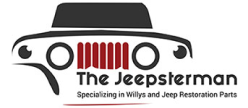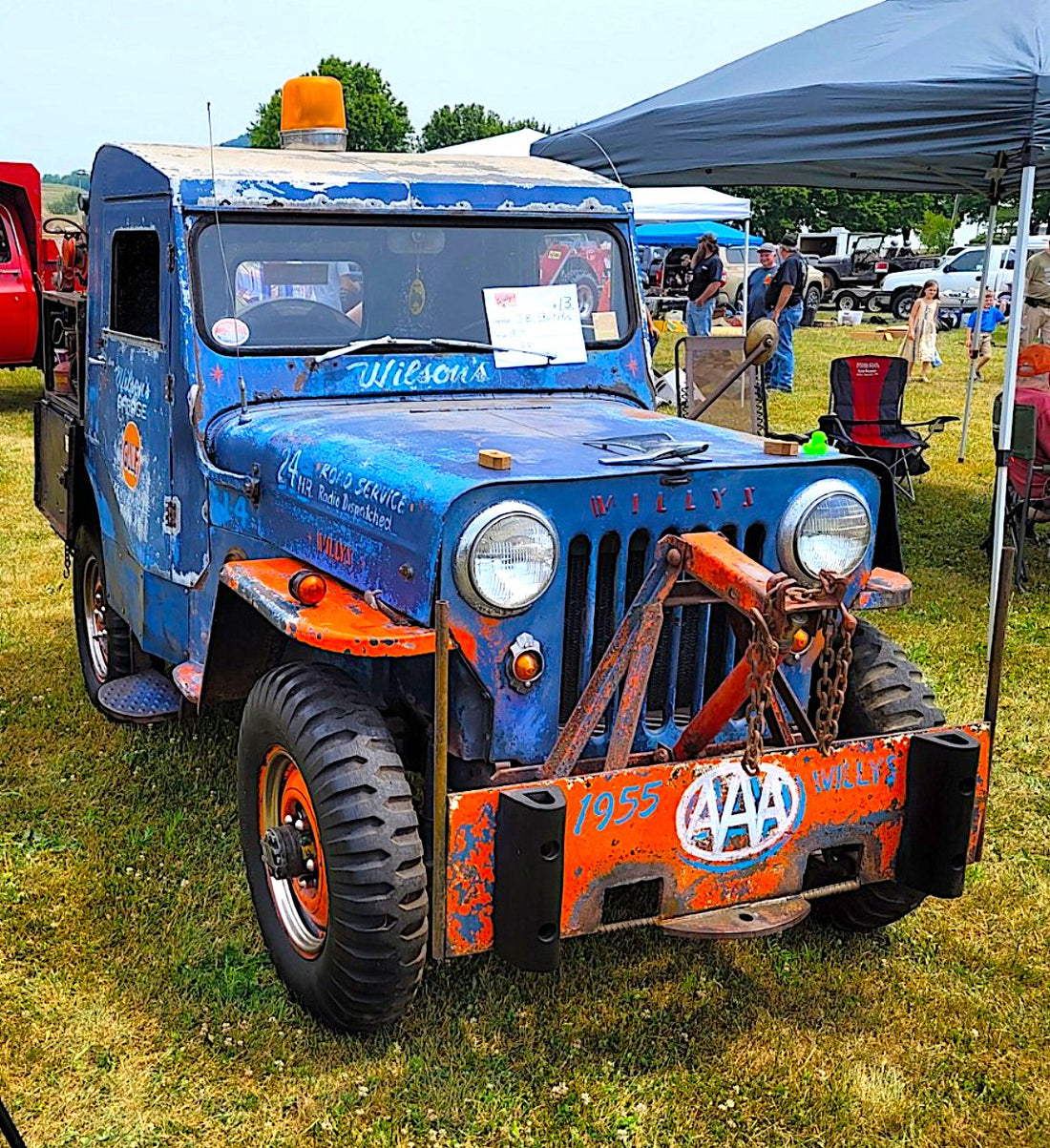CJ-3B Tech Specs: Mastering the Flow: Cooling System and Maintenance Insights
Click on any link below to shop now for Willys CJ-3B Jeep parts:
Welcome back to our ongoing series delving into the technical specifications of the iconic Willys CJ-3B. In this segment, we turn our attention to the cooling system. Understanding how the CJ-3B keeps its engine at the right temperature is essential for any enthusiast. Let's explore the intricate details of its radiator, water pump, and cooling hoses, along with essential maintenance methods to keep your CJ-3B running cool.
The CJ-3B's cooling system works by circulating coolant through a "crossflow" radiator at the front of the vehicle. The radiator has closely spaced cooling fins, and a fan driven by belts draws air through these fins, dissipating heat from the coolant. The water pump, typically mounted at the front of the engine, circulates the coolant through the engine and the radiator. The system includes hoses, such as the upper and lower radiator hoses, to carry hot coolant from the engine to the radiator and cooled coolant back to the engine. Regular maintenance, including checking hoses and the radiator, is crucial to prevent leaks and ensure optimal cooling.
- Type: "Crossflow" radiator.
- Material: Core and tanks constructed from materials such as brass or aluminum for efficient heat transfer.
- Design: "Crossflow" radiator design, allowing horizontal coolant flow for improved cooling.
- Cooling Fins: Closely spaced fins on the core for increased heat dissipation.
- Mounting Location: At the front of the vehicle, typically behind the grille and in front of the engine.
- Radiator Cap: "Radiator Pressure Cap" to maintain appropriate pressure in the cooling system.
- Material: Cast Iron.
- Design: Centrifugal pump with an impeller that circulates coolant throughout the engine.
- Mounting Location: Front of the engine block, connected to the engine's accessory drive system.
- Pulley: Driven by the engine crankshaft belt.
- Coolant Inlet & Outlet: Inlet connected to the lower radiator hose, outlet connected to the engine's cooling system.
- Bypass System: Allows controlled coolant flow back into the engine when the thermostat is closed.
- Upper Radiator Hose: Connects the upper part of the radiator to the engine, carrying hot coolant for cooling.
- Lower Radiator Hose: Connects the lower part of the radiator to the engine, carrying cooled coolant.
- Heater Hose: Connects the engine to the heater core for interior heating.
- Bypass Hose: Connects the water pump to the thermostat housing or intake manifold.
- Bypass Hose (if applicable): Connects the thermostat housing to the intake manifold.
- Overflow Hose: Connected to the radiator overflow reservoir, providing a path for excess coolant.
Cooling System Maintenance and Upkeep for CJ-3B:
Proper maintenance of the cooling system is crucial for the optimal performance and longevity of the CJ-3B. Here's a guide to help you keep the cooling system in top shape:
-
Coolant Level Check:
- Frequency: Monthly or as needed.
- Method: With the engine cool, visually inspect the coolant level in the radiator and overflow reservoir. Add a mixture of water and antifreeze if needed to maintain the proper level.
-
Coolant Flush and Change:
- Frequency: Every 2 to 3 years or as recommended in the owner's manual.
- Method: Drain the existing coolant from the radiator and engine block. Flush the system with water to remove any sediment or contaminants. Refill the system with a mixture of fresh coolant and water as per manufacturer's specifications.
-
Radiator Cap Inspection:
- Frequency: During coolant level checks.
- Method: Check the condition of the radiator cap gasket. Replace the cap if the gasket is worn or damaged to maintain proper pressure within the cooling system (typically around 7 psi).
-
Hose Inspection:
- Frequency: Every 6 months or as recommended.
- Method: Visually inspect all cooling hoses for cracks, wear, or leaks. Gently squeeze the hoses to check for soft spots or weakness. Replace any hoses showing signs of deterioration.
-
Water Pump Inspection:
- Frequency: Annually or as recommended.
- Method: Inspect the water pump for leaks, corrosion, or damage. Check the pulley for wobbling or play. Replace the water pump if any issues are found.
-
Radiator Fins Cleaning:
- Frequency: Annually or as needed.
- Method: Gently clean the radiator fins with compressed air or a soft brush to remove dirt and debris. Avoid using excessive pressure to prevent damage to the fins.
-
Thermostat Check and Replacement:
- Frequency: Every 2 to 3 years or as needed.
- Method: Test the thermostat in a pot of water to ensure it opens at the correct temperature. Replace it if it fails to open or close properly.
-
Coolant Mixture and Protection:
- Frequency: During coolant change.
- Method: Use a proper mixture of antifreeze and water to provide sufficient freezing and boiling protection. Follow the manufacturer's recommendations for the correct ratio.
-
Coolant System Pressure Test:
- Frequency: During regular maintenance or if cooling issues arise.
- Method: Use a cooling system pressure tester to check for leaks and verify the system's ability to hold pressure.
-
Radiator Cap Pressure Test:
- Frequency: During regular maintenance.
- Method: Use a radiator cap pressure tester to ensure the cap releases pressure at the specified rating.

